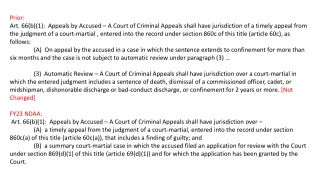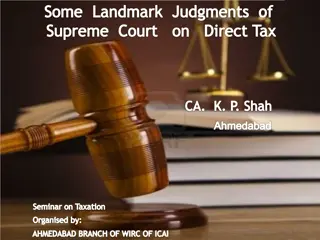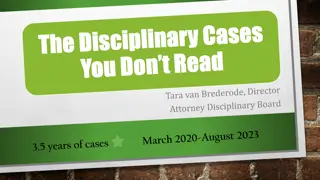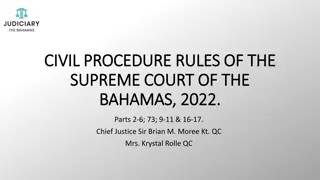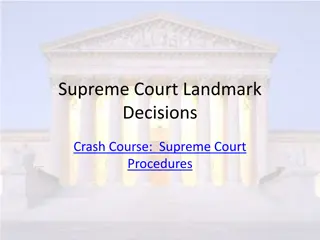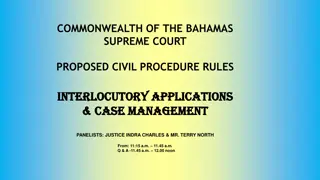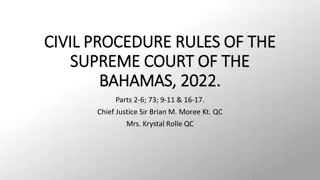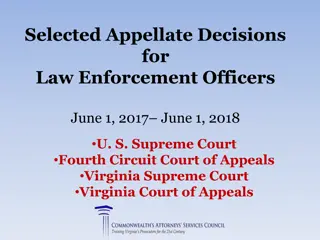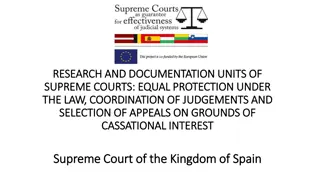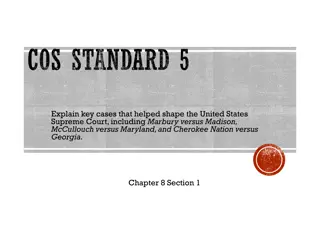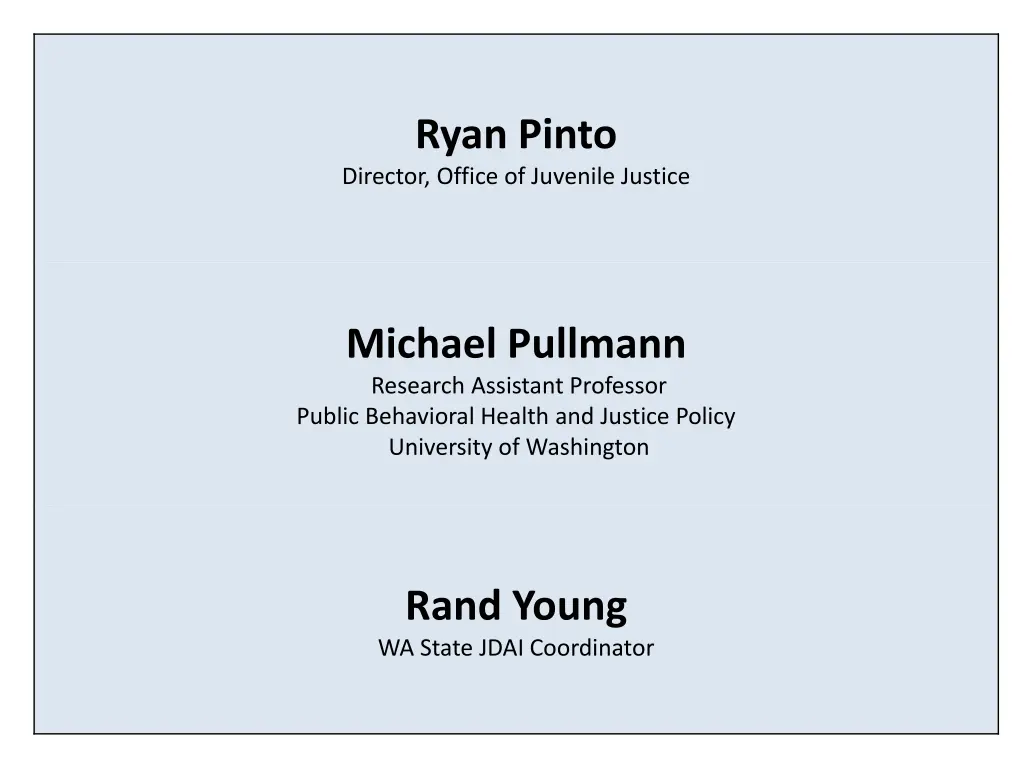
Efforts to Reduce Racial & Ethnic Disparities in Juvenile Justice System
Learn about the efforts to reduce racial and ethnic disparities in the juvenile justice system in Washington State, including findings, assessments, and promising reduction strategies. Discover key recommendations for building infrastructure, coordination, policy modifications, and enhanced knowledge of Disproportionate Minority Contact (DMC).
Download Presentation

Please find below an Image/Link to download the presentation.
The content on the website is provided AS IS for your information and personal use only. It may not be sold, licensed, or shared on other websites without obtaining consent from the author. If you encounter any issues during the download, it is possible that the publisher has removed the file from their server.
You are allowed to download the files provided on this website for personal or commercial use, subject to the condition that they are used lawfully. All files are the property of their respective owners.
The content on the website is provided AS IS for your information and personal use only. It may not be sold, licensed, or shared on other websites without obtaining consent from the author.
E N D
Presentation Transcript
Ryan Pinto Director, Office of Juvenile Justice Michael Pullmann Research Assistant Professor Public Behavioral Health and Justice Policy University of Washington Rand Young WA State JDAI Coordinator
Efforts to reduce Racial & Ethnic Disparities in our Juvenile Justice System Supreme Court Minority & Justice Commission WA State Sentencing Commission Center for Children & Youth Justice DMC Reduction Plan WA Partnership Council on Juvenile Justice May 7thRED Symposium RED U of W DMC Assessment JDAI Committee
Washington State DMC Assessment * * * * * * * * * * * * * Two-part assessment: 1. Statistical analysis of disproportionality at several decision points 2. Qualitative in-depth interviews with 3-7 stakeholders in each jurisdiction
Findings Jurisdictions vary widely in sophistication about RED. Data quality is poor in many jurisdictions Cumulative disproportionality generally increases through the stages of justice system involvement for African Americans and Latinos. Incremental disproportionality is highest at the front end of the system: arrest/referral, diversion, detention, and decision to petition. Asian youth have consistently lower involvement with the justice system than white youth Most interviewees believed that RED was the result of several interacting factors 5
There are promising RED reduction efforts across the state JJ & RA Data quality trainings Multidisciplinary RED reduction committees Reminder systems to prevent warrants for failure to appear Collaboration with tribal court and authorities Increasing alternatives to detention 7
Recommendations Build an infrastructure to address RED at local and state levels Coordination and leadership Assess and modify policy and practice Improved knowledge of DMC 8
May 7th Racial & Ethnic Disparities Symposium Purpose of Symposium: provide information/resources to assist county juvenile courts in implementing the University of Washington DMC Assessment recommendations. 70 Participants: 5-person teams from 12 juvenile courts, JJ & RA, WA-PCJJ Faculty: Burns Institute James Bell & Laura John Ridolfe Symposium Agenda: Overview of racial & ethnic disparities in the juvenile justice system Using data to identify/measure REDs at JJS decision points Questions for Teams: Has your jurisdiction used data to identify racial & ethnic disparities? Does your jurisdiction have political will and leadership to reduce REDs? Is there a RED committee with JJS and community representation? Action Plan identifying the top 2 ideas or strategies jurisdictions will implement WA-PCJJ Funding: for additional training & technical assistance to assist jurisdictions in implementing their action plans.

